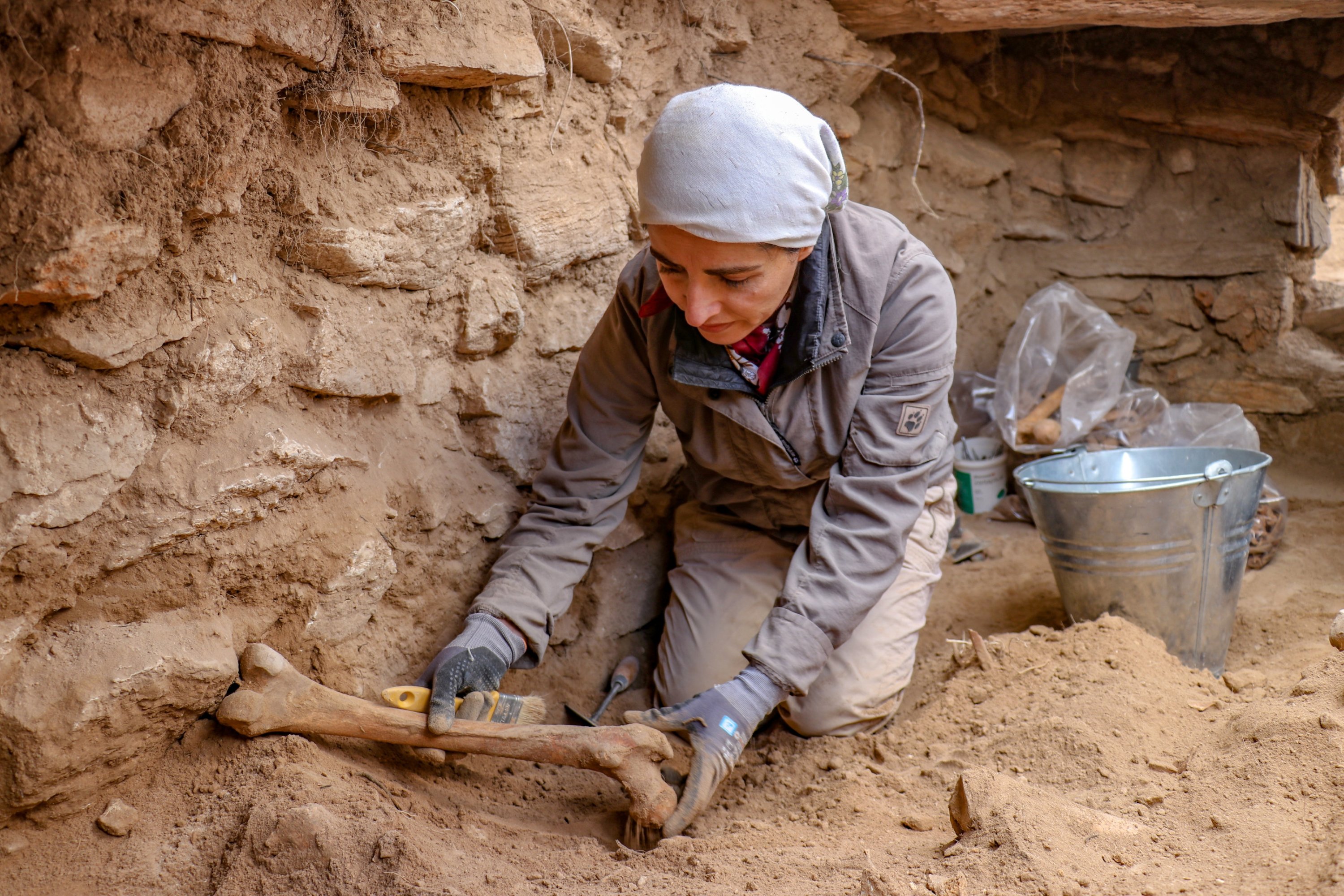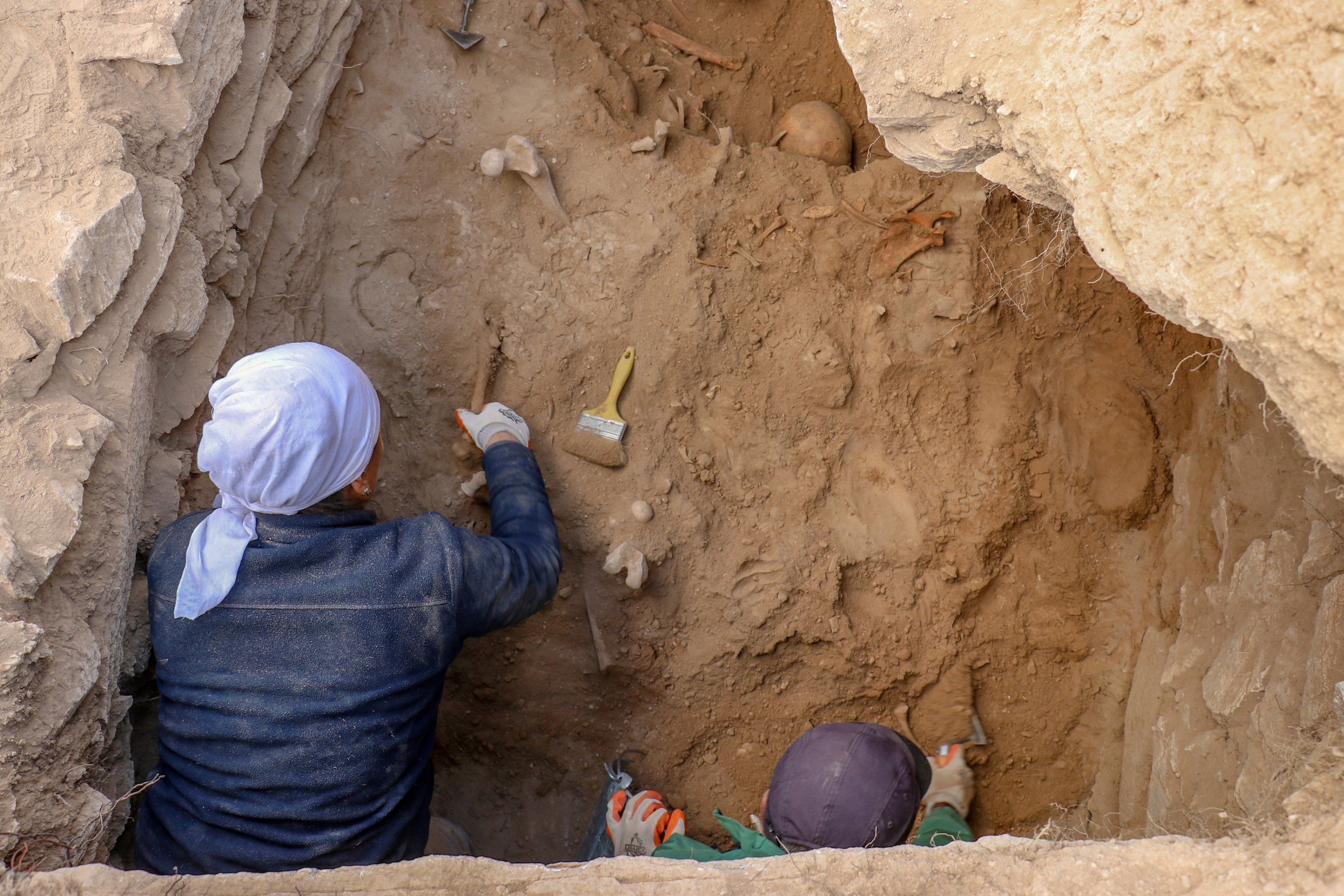© Turkuvaz Haberleşme ve Yayıncılık 2024
Archaeologists have unearthed a trove of discoveries shedding light on ancient burial rituals and intriguing cranial surgeries dating back approximately 3,200 years at the Kaniya Bekan Necropolis, situated approximately 34 kilometers (21.13 miles) from the Çatak district near Türkiye’s Van.
With the support of the General Directorate of Cultural Heritage and Museums, as well as the Van Metropolitan Municipality, academics conducting excavations in the area known as the Kaniya Bekan Necropolis identified three rooms with walls built of stones and four constructed tombs, supervised by Gülan Ayaz in collaboration with a team of dedicated academics, the site has become a focal point of historical exploration.

Intriguingly, examinations of these remains have revealed evidence of cranial surgeries, including traces of trepanation and brain surgery, present in 30 of the skeletons. Hakan Yılmaz, an associate professor at the Department of Archaeology at Van Yüzüncü Yıl University (YYU), expressed the significance of these discoveries.
“In our exploration of this necropolis, we have encountered approximately 30 skulls bearing signs of ancient surgical procedures. Our analysis indicates the utilization of various methods like carving, cutting, drilling and scraping, reflecting a high degree of medical knowledge. About 60% of those who underwent these surgeries showed signs of healing, suggesting a relatively successful medical practice,” Yılmaz stated.

Further studies are planned for the extracted bones, with thorough anthropological analyses aimed at determining the age, gender and potential diseases that may have affected these ancient individuals. Yılmaz emphasized: “By meticulously examining these remains, including dental features, we aim to unravel aspects of their diet, illnesses during childhood and a myriad of other valuable information.”
He also added, “We can say that the Kaniya Bekan Necropolis is the only place in Türkiye where so many cranial surgeries have been performed, highlighting the importance given to the patients. We also observed that the surgeries were mostly conducted on the right and left sides of the skull and the back of the head.”
Moreover, the excavation also revealed distinctive burial traditions of the Iron Age. The tombs contained offerings such as food, vessels and decorative items interred with the deceased. Notably, the presence of dog burials alongside human skeletons and smaller animal remains near tomb entrances suggests a tradition of ritual offerings.
Ayaz underlined the significance of the site, stating, “Our ongoing work in the area aims to unravel more mysteries surrounding this ancient necropolis and provide a deeper understanding of ancient Anatolian cultures.”
